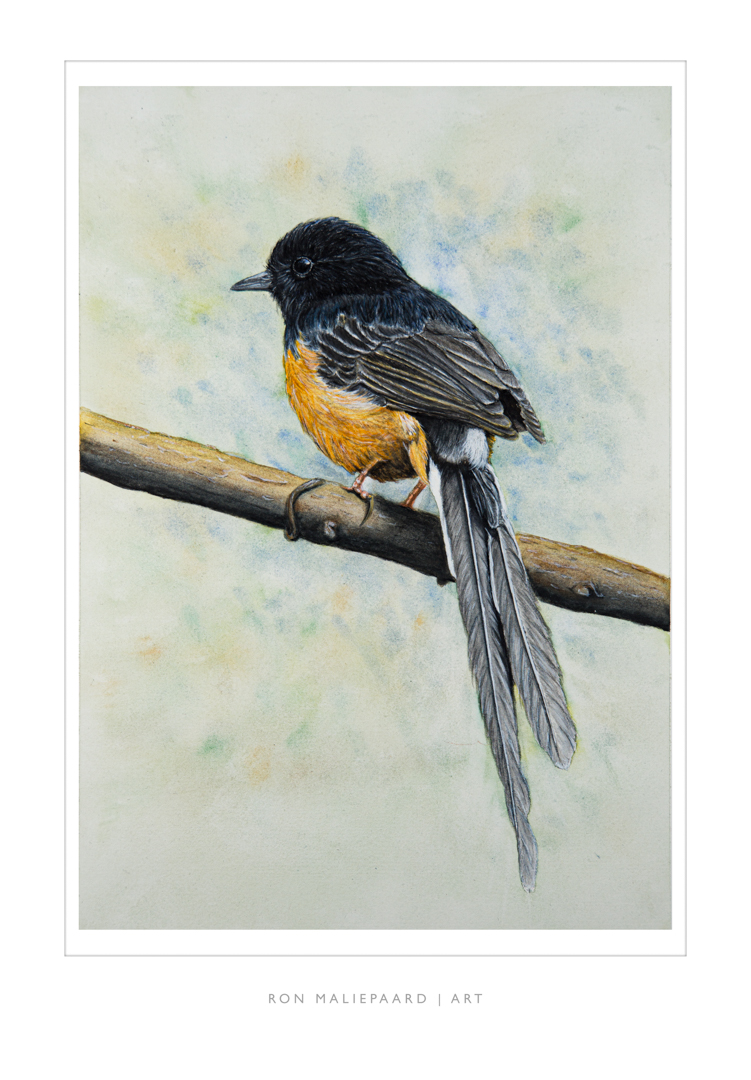
Cotman watercolours tubes, Faber Castel Pastel pencils on Winsor & Newton Professional Watercolour paper 300gsm 35.6×25.4 cm Hot Press Grain Satiné.
The first thing I knew when I saw the beautiful male of the White-rumped shama (Copsychus malabaricus) (Blijdorp Zoo in Rotterdam, the Netherlands): I had to paint it. I had to have some patience, but finally the bird sat down in such position that I could take a good picture from it, with its beautiful long tail (can grow up to 30 cm long) well visible and also the beautiful color on its belly. I made this painting of the best photo.
The White-rumped shama used to be counted among the thrushes (hence the former name white-rumped shama thrush or simply shama thrush ), but nowadays the species is classified under the group of flycatchers (Muscicapidae). They are found in the Middle East and North Africa. There they live in dry areas with dense, impenetrable shrubs and trees. Preferably undergrowth of prickly thickets with sharp edges, where they feed on insects, berries and seeds that are present at that moment.
The male sings mainly in the early morning and late afternoon, when the temperature is a bit lower. His singing consists of a series of whistling, vibrating and clicking sounds that he sometimes imitates from other birds or even from people. As with many birds, he sings to defend his territory and to lure a mate. Because of the beautiful singing, the Shama thrush is also kept as an aviary bird. But 2 males put together will lead to fierce battle ensues!
Own photo, taken in Zoo Blijdorp Rotterdam
–..– Facebook –..– Instagram –..– Adobe Portfolio –..– Photo albums –..– Nature blog –..–
